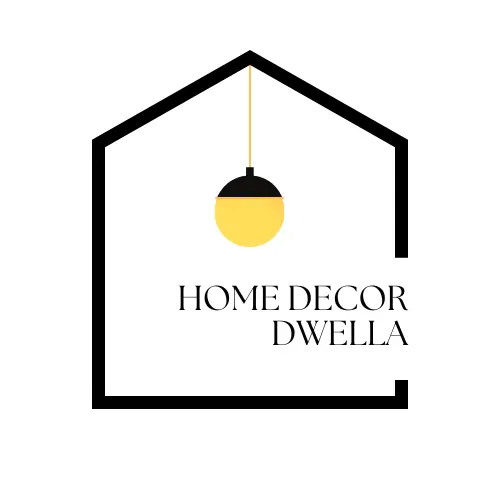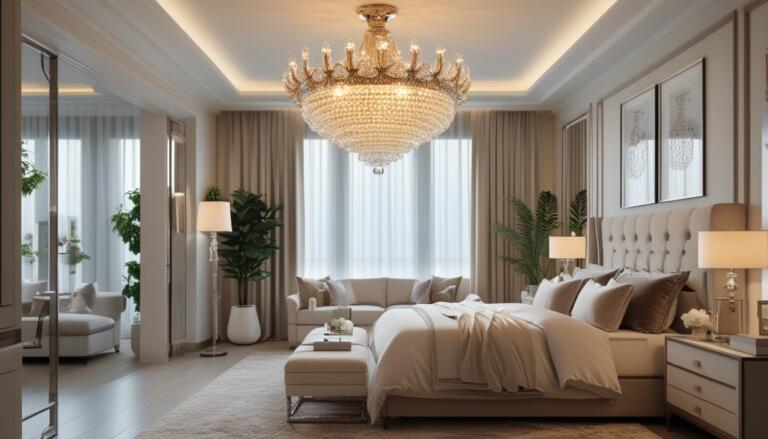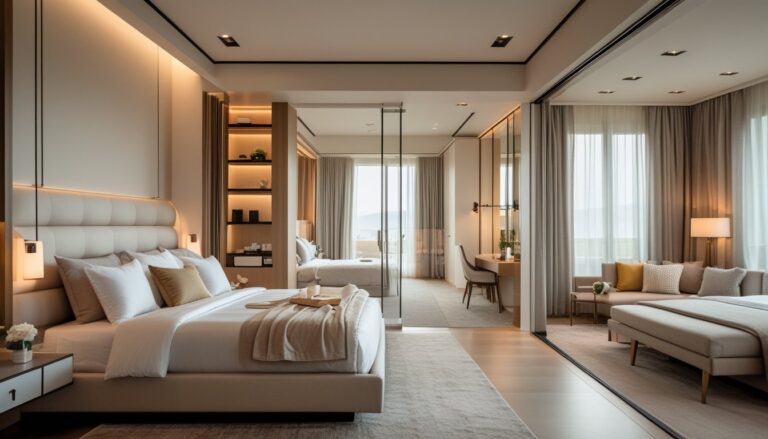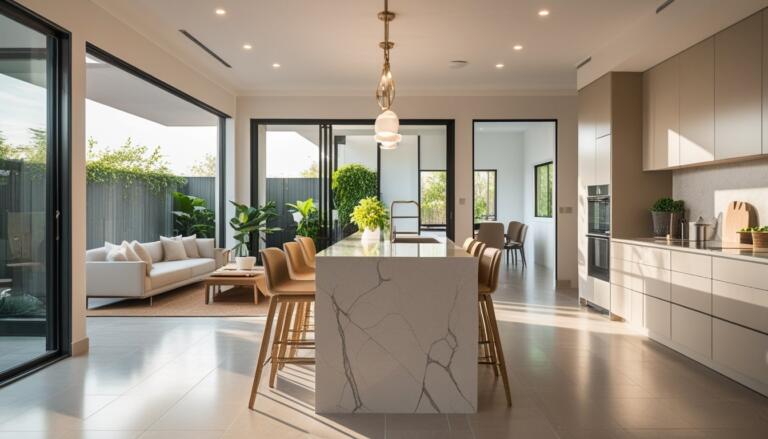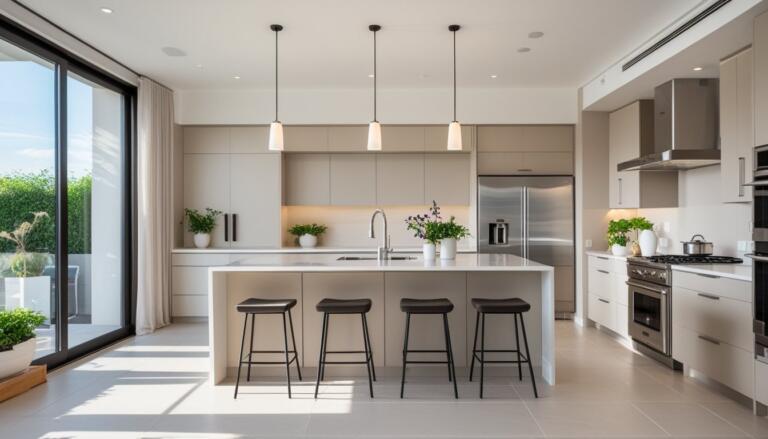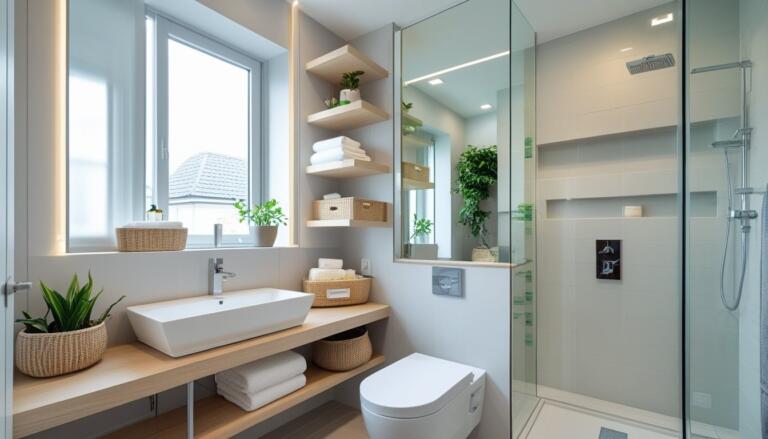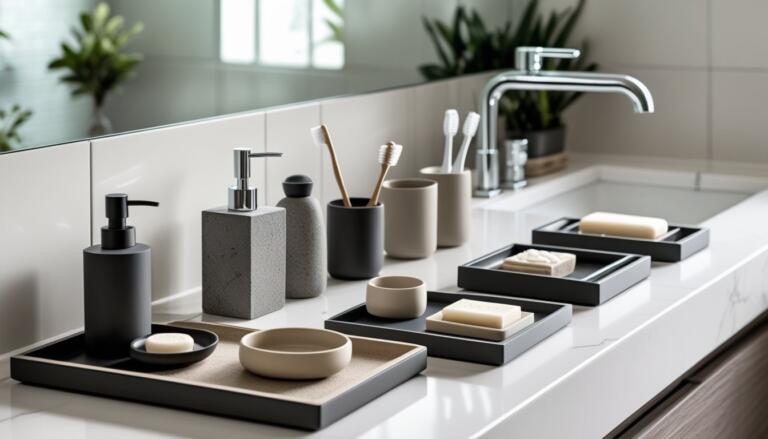6 Home Office Desk Ideas for Maximizing Productivity and Style
Creating a comfortable and functional home office starts with choosing the right desk. A good desk supports productivity and fits well within the available space. Many people look for desks that balance style, function, and comfort to make working at home easier.
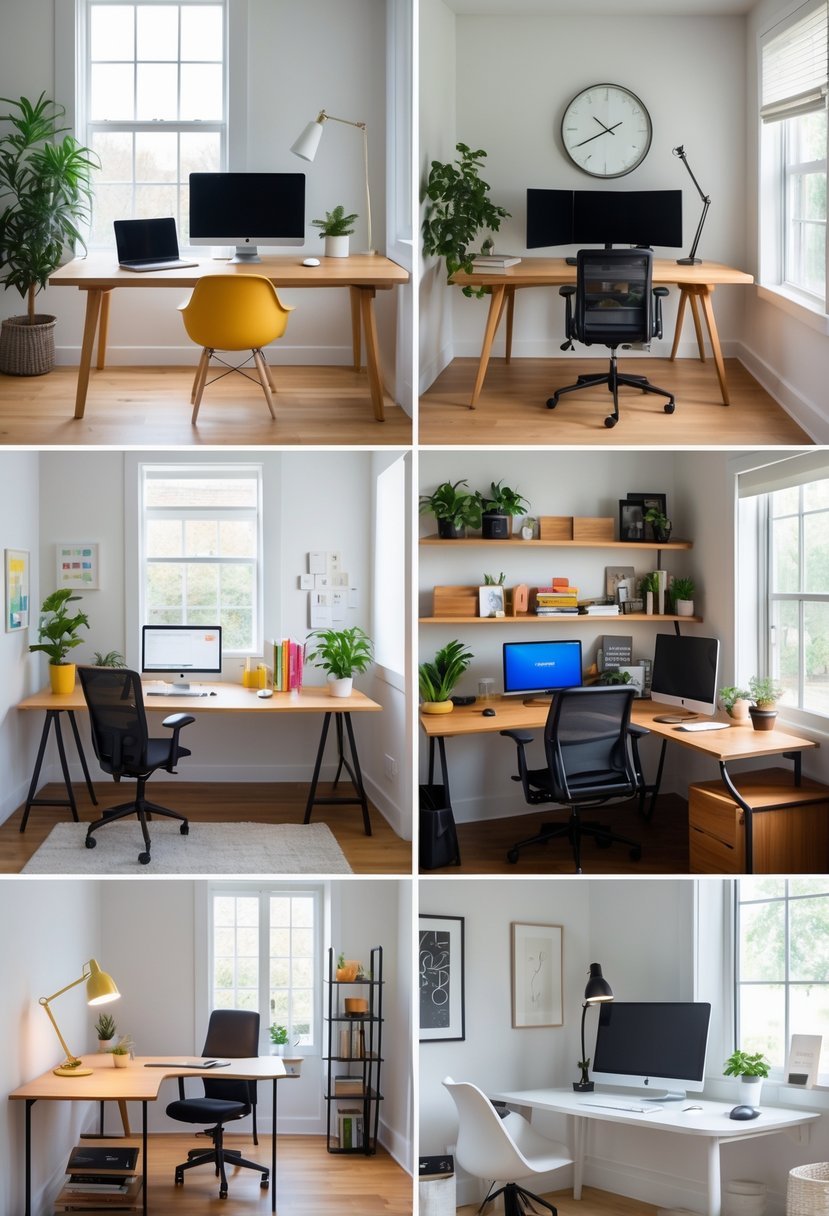
The key to a better work-from-home experience is selecting a desk that suits both the room and the user’s needs. This article will present six desk ideas to help anyone improve their home office setup, whether they have a small nook or a larger space to fill.
1) Adjustable standing desks for ergonomic flexibility
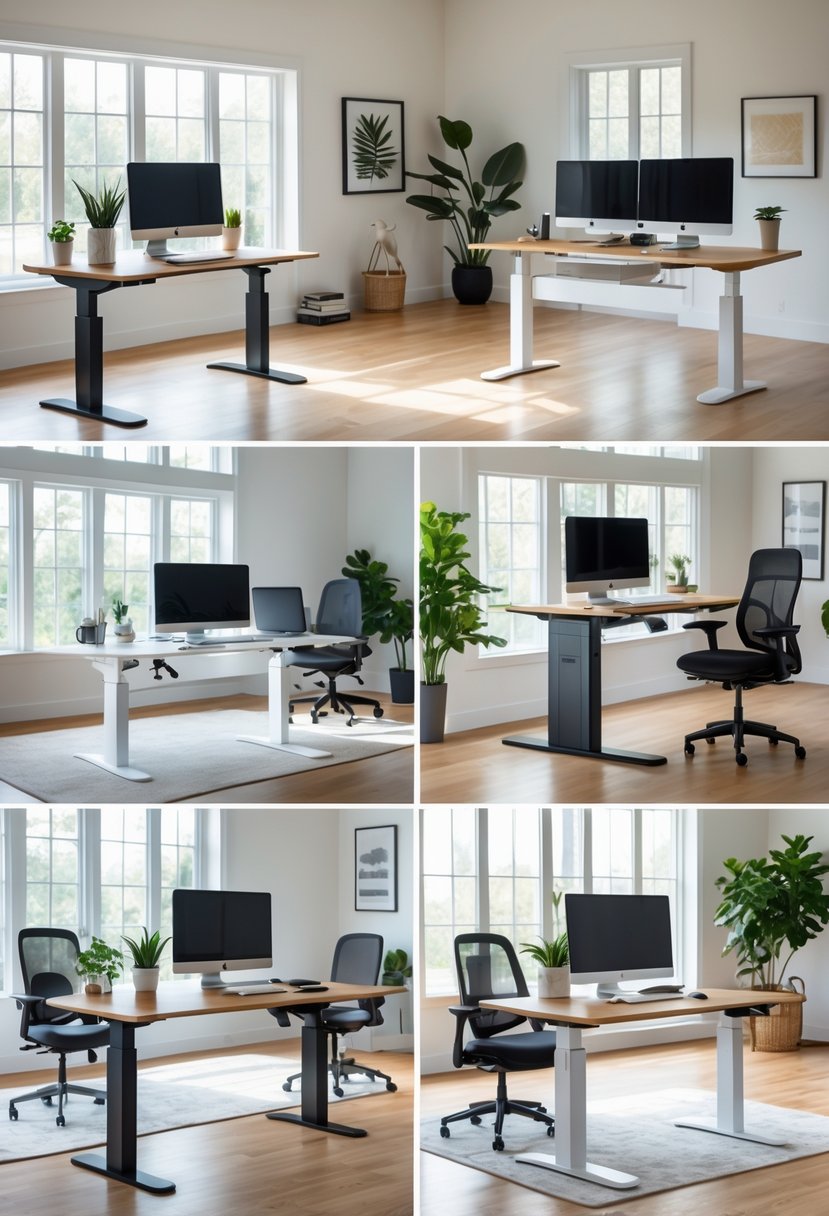
Adjustable standing desks let users switch between sitting and standing throughout the day. This helps reduce strain on the back and improves posture.
These desks often have electric controls or memory settings for easy height changes. They fit various room sizes and styles, making them a versatile choice.
Using an adjustable standing desk can support comfort and productivity by allowing better positioning of the monitor and keyboard. This setup encourages a healthy working posture.
2) Minimalist desks with built-in cable management
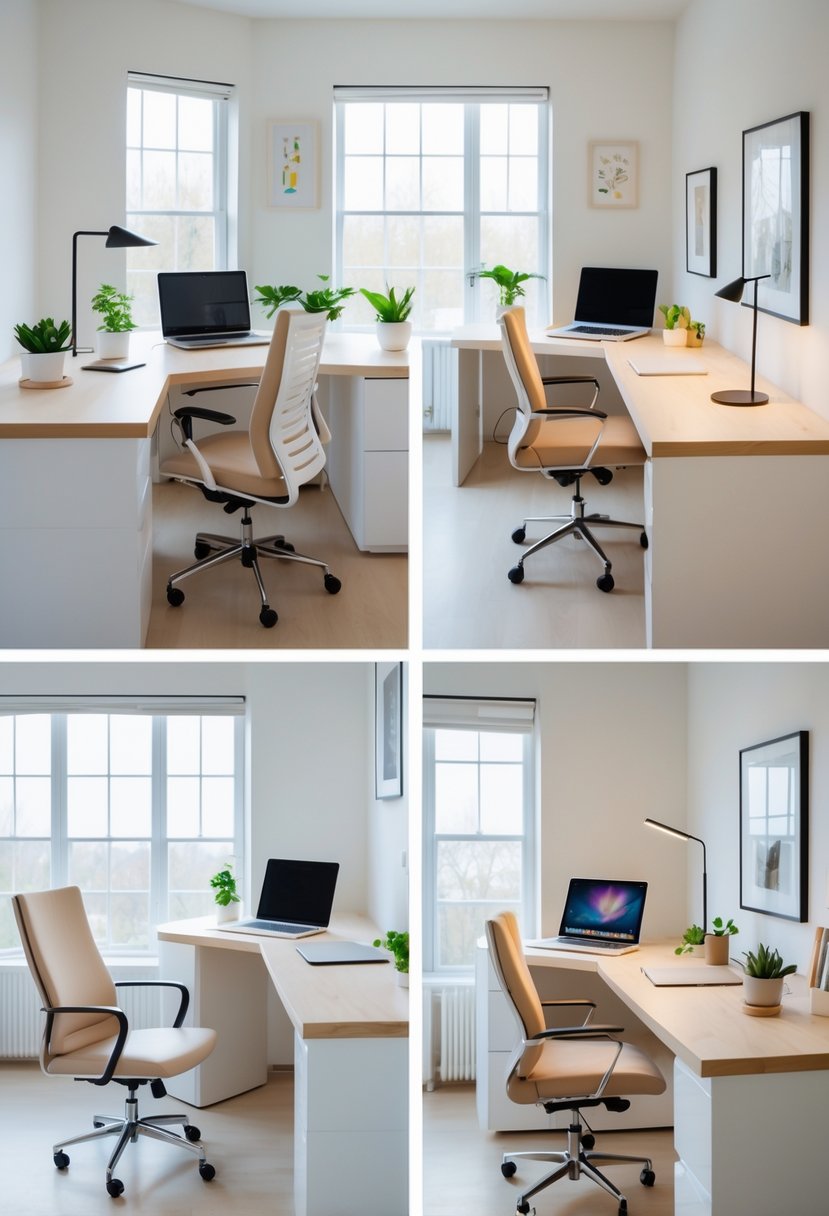
Minimalist desks often include built-in cable management to keep cords organized and out of sight. These desks have features like hidden compartments or pass-through holes for cables.
This helps maintain a clean and tidy workspace without extra accessories.
Some desks also offer integrated charging stations. This adds convenience while reducing desktop clutter.
Using these desks supports focus and neatness in a home office setup.
3) Glass top desks for a modern aesthetic
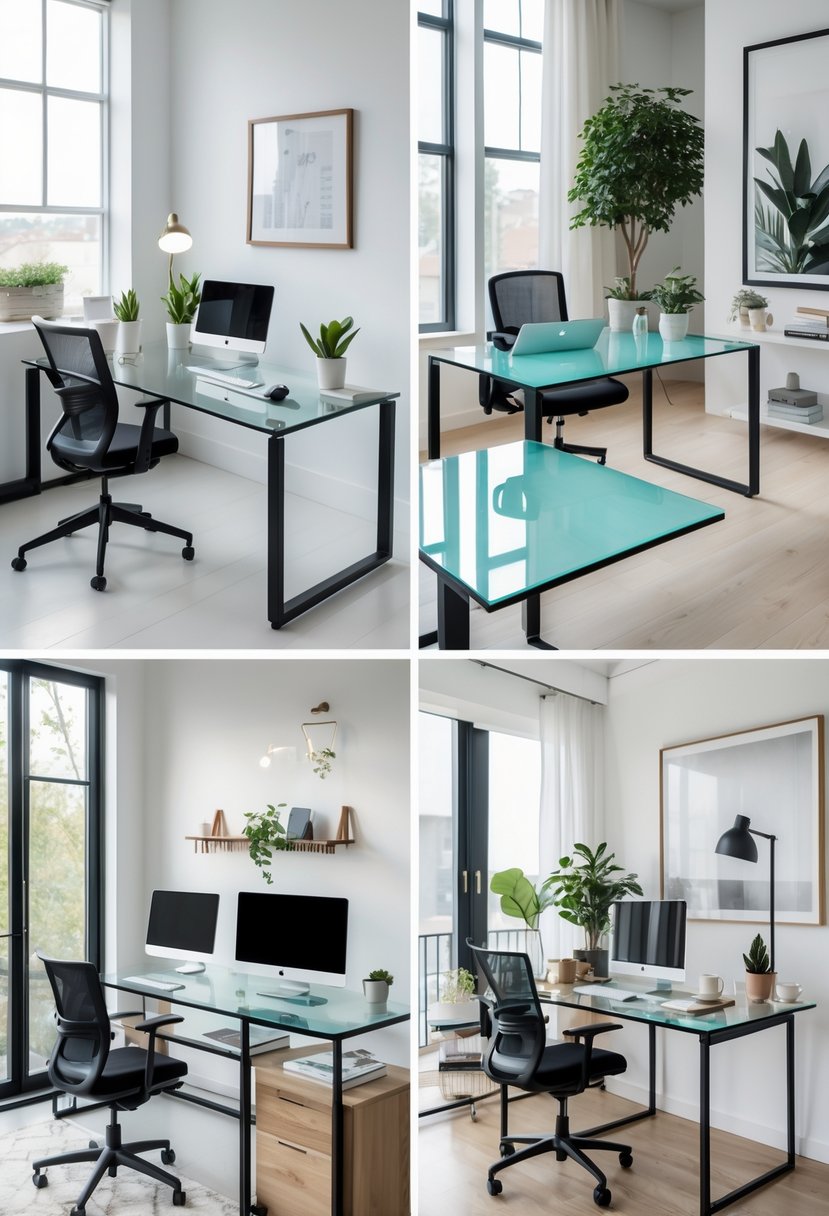
Glass top desks offer a sleek, clean look that suits modern home offices. They create a sense of openness and make smaller rooms feel larger.
These desks usually pair a clear or tinted glass surface with metal legs, giving both style and durability.
They provide a smooth, sturdy workspace that works well for computers and writing. Glass desks require simple care and can easily blend with many decor styles.
4) L-shaped desks to maximize corner spaces

L-shaped desks fit neatly into corners, making good use of space often left empty. They provide a large work surface, allowing for different tasks like computer work and writing to happen side by side.
These desks create clear work zones, helping keep the workspace organized. They work well in both small and large rooms by using corner areas effectively.
5) Desks with integrated storage drawers
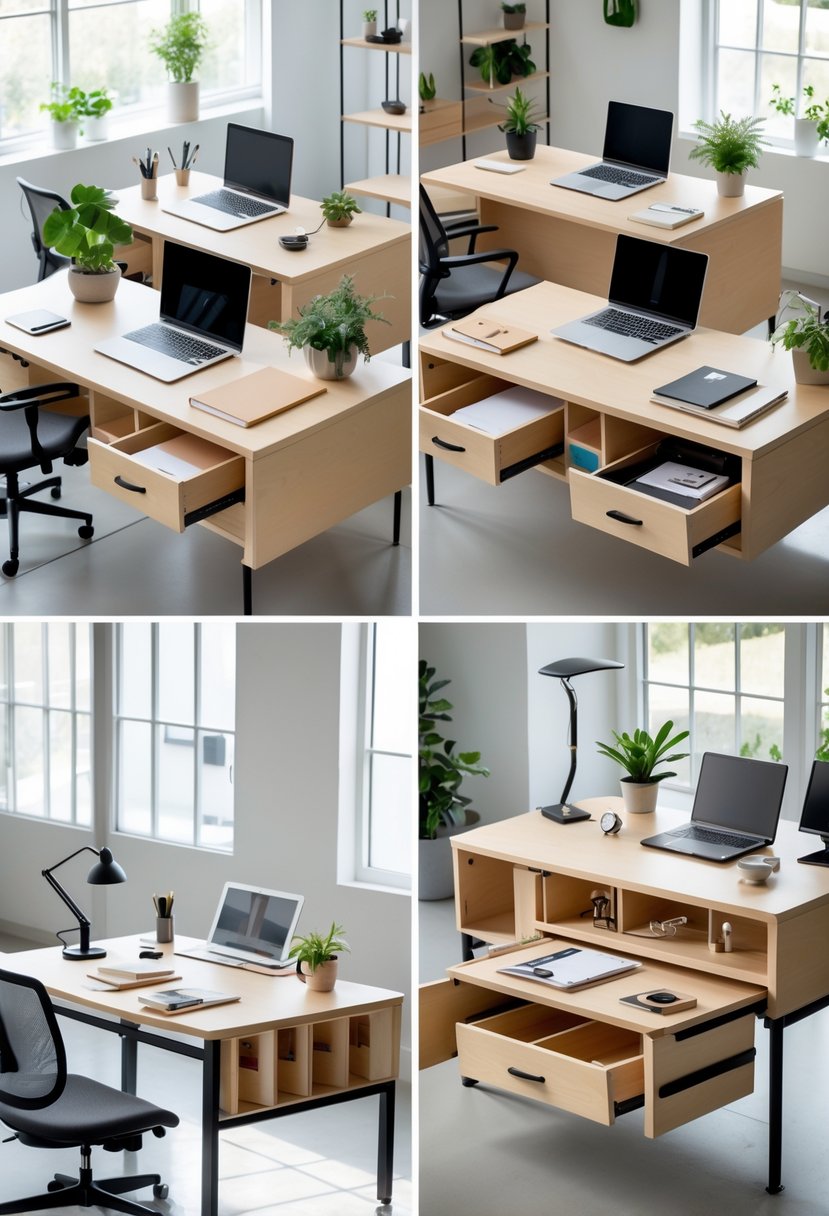
Desks with integrated storage drawers help keep a workspace tidy. They offer built-in compartments for documents, office supplies, and personal items.
This design saves space by combining work surface and storage in one piece. It makes the home office more organized and efficient.
Many styles include multiple drawers and sometimes cabinets or shelves for extra storage. This option is practical for anyone needing both workspace and easy access to their tools.
6) Sculptural desks with curved edges for style
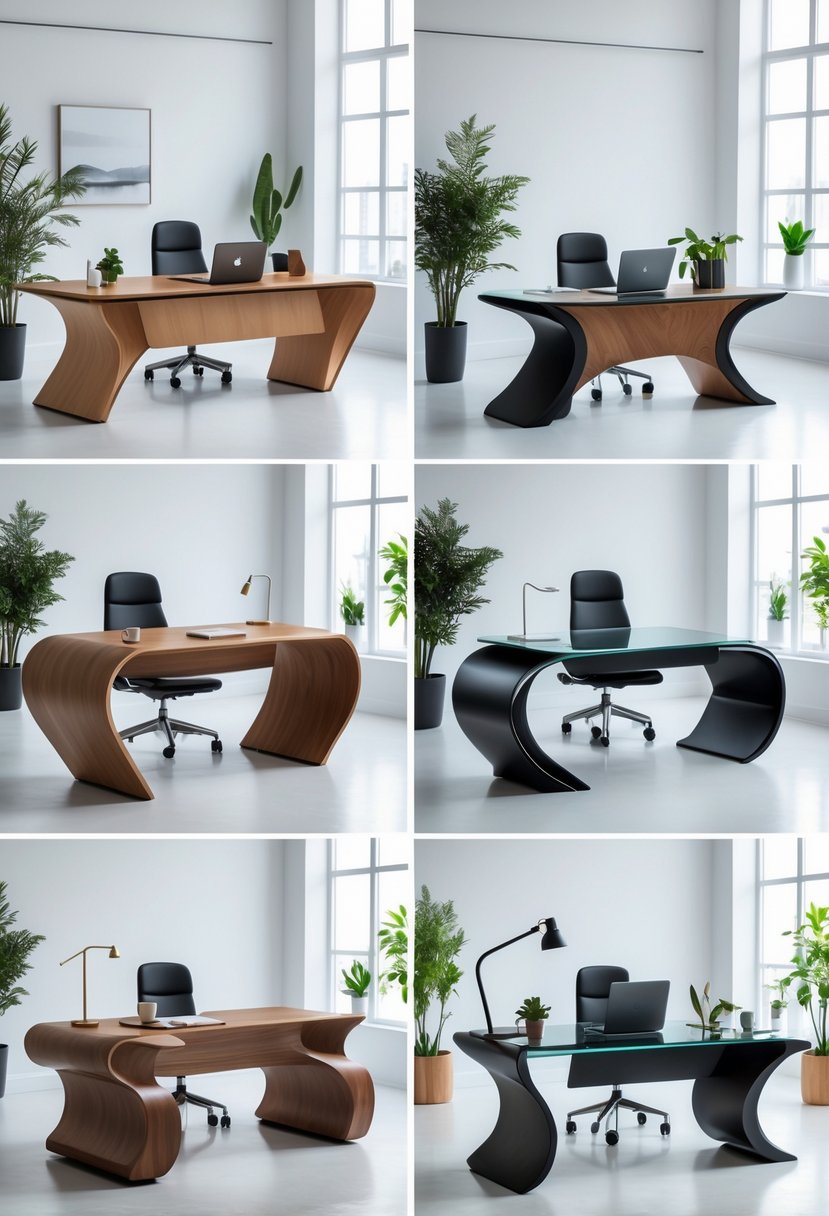
Sculptural desks with curved edges add a touch of design to any home office. Their smooth, rounded shapes create a softer, more inviting look.
These desks often feature natural wood and artistic details, making them both functional and visually interesting. The curves can also improve comfort by reducing sharp edges around the workspace.
They fit well in creative settings or modern homes that want a blend of style and practicality.
Factors to Consider When Choosing a Home Office Desk
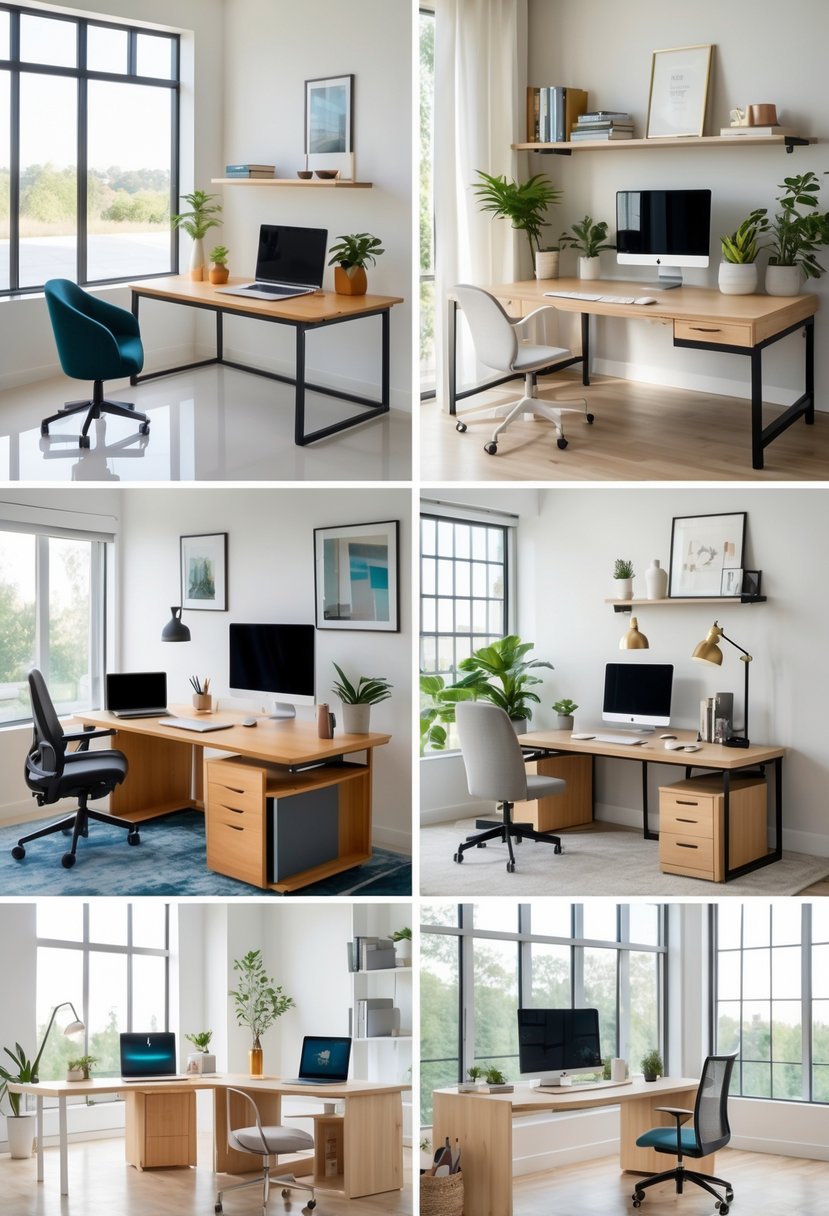
Choosing the right desk means thinking about how comfortable it will be, how much space it fits into, and how well it matches the room’s look. These details can impact daily work and overall satisfaction with the workspace.
Ergonomics and Comfort
A desk should support good posture to avoid strain. The height needs to suit the user so their elbows are at a 90-degree angle when typing. Adjustable desks or those with keyboard trays can help achieve this.
Legroom is just as important. There should be enough space under the desk to move legs freely without hitting drawers or support beams.
Adding ergonomic features like a curved front edge or wrist rests can reduce discomfort. This helps prevent pain during long work sessions.
Space Requirements
Measure the available area carefully before choosing a desk. The desk should fit well without crowding the room or blocking pathways.
Consider the desk’s depth. It needs to hold a computer, monitor, and other work tools easily. A surface too small may cause clutter and reduce efficiency.
If storage is important, look for desks with built-in shelves or drawers. These keep items organized and save space for more essential activities.
Aesthetic and Style Cohesion
The desk should fit the style of the home office. It needs to blend with other furniture and the room’s color scheme to create a pleasant environment.
Materials matter here. Wood offers a classic look, metal feels modern, and glass can make the space look larger.
Choosing a desk that matches the overall design helps maintain visual balance. A cohesive style can promote a more focused and welcoming workspace.
Maximizing Productivity in Your Home Office
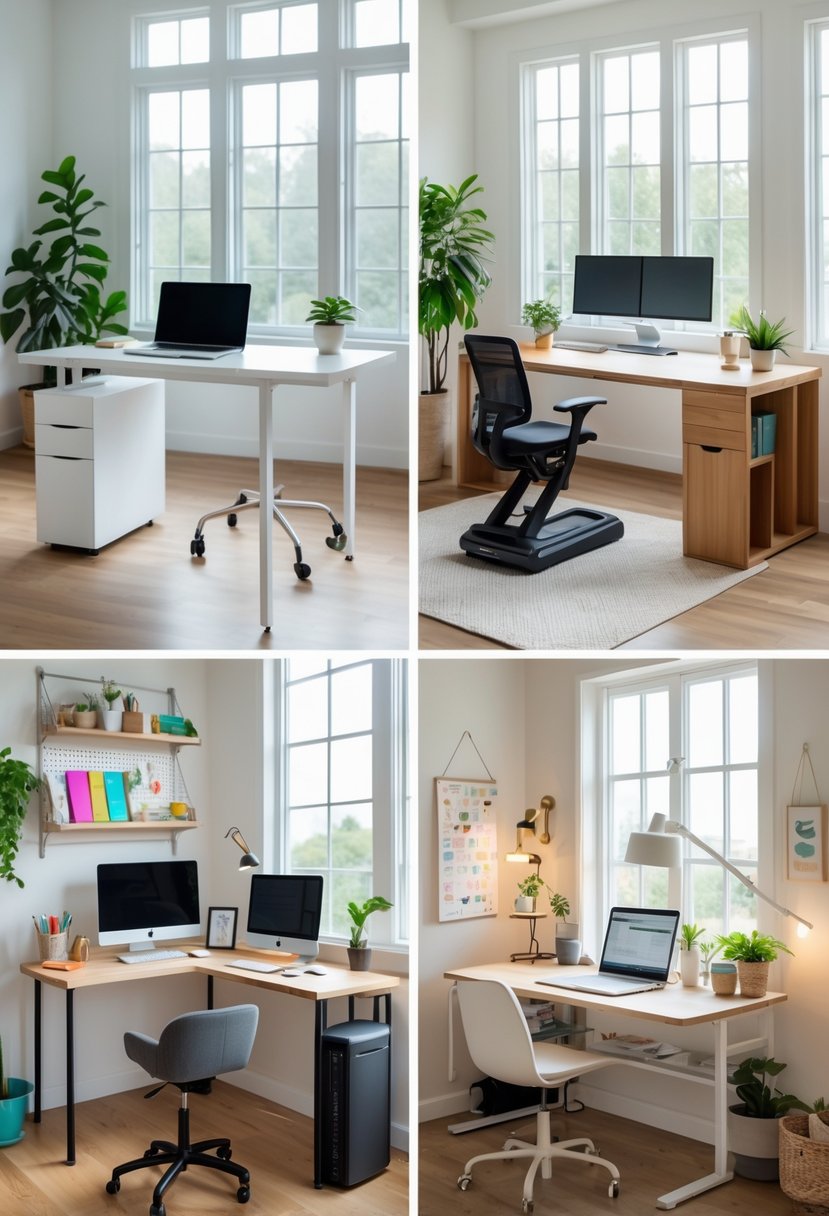
Creating a workspace that supports focus and efficiency starts with how the desk is placed in the room and what tools are used daily. Both setup and accessories have a direct impact on workflow and comfort.
Desk Placement Strategies
Position the desk near natural light sources like windows to reduce eye strain and boost alertness. Avoid facing the desk directly toward a blank wall or high-traffic areas that cause distractions.
Leaving enough space behind the chair allows easy movement. A minimum of 3 feet is recommended. This openness helps prevent feelings of confinement and supports better posture changes throughout the day.
Using vertical space for storage keeps the desk surface clear. Shelves or wall-mounted organizers close to the desk make it easy to access supplies without cluttering the workspace.
Finally, orient the desk so power outlets and internet connections are within reach, reducing the need for long cords or adapters that can cause mess and hazards.
Essential Desk Accessories
Key accessories include an adjustable monitor stand to keep screens at eye level, which helps avoid neck pain. A quality, supportive chair cushion improves comfort during long sitting periods.
Using a cable management system, like clips or trays, prevents wires from tangling and keeps the desk neat. Organizers such as pen holders, drawer dividers, or small bins maintain order of small items.
Lighting is crucial; a desk lamp with adjustable brightness and color temperature reduces glare and fatigue. Additionally, placing a small whiteboard or notepad nearby supports quick note-taking to keep ideas and tasks visible.
Having these tools within easy reach enhances workflow and minimizes distractions caused by searching for essentials.
Frequently Asked Questions
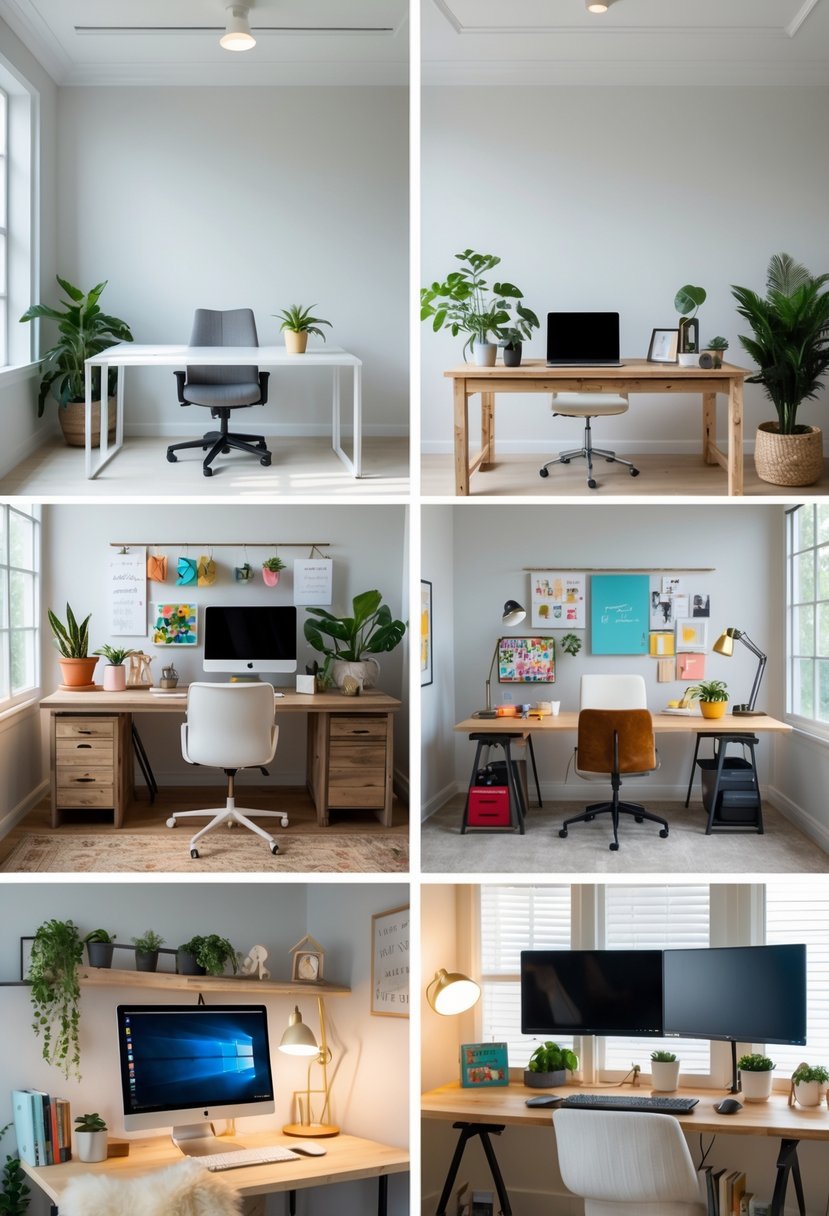
A well-designed home office desk can save space and improve productivity. Built-in desks and cabinets offer practical solutions for small spaces while keeping the area organized and neat.
What are some innovative built-in desk designs for small home offices?
Built-in desks with adjustable standing options help users switch between sitting and standing easily. Minimalist designs often include built-in cable management to keep cords hidden and desks clutter-free.
L-shaped built-in desks make good use of corner spaces, maximizing work surface without overcrowding the room. Some designs include glass tops for a clean, modern look that brightens the area.
How can I incorporate a wall unit with a built-in desk in my home office?
A wall unit can combine shelving, cabinets, and a desk in one compact unit. Position the desk at a comfortable height and use the shelves above for storage or display.
Choosing a desk with built-in drawers attached to the wall unit keeps supplies within reach. It also helps maintain a streamlined appearance by containing clutter inside the cabinetry.
What are the best ways to combine built-in office cabinets and desks for a streamlined look?
Pairing desks with integrated storage drawers hides documents and tools, creating a tidy workspace. Matching the materials and colors of the desk and cabinets contributes to a seamless design.
Built-in cabinets that reach from floor to ceiling make use of vertical space for storage. Incorporating handle-less doors or recessed pulls enhances the clean, modern aesthetic.
